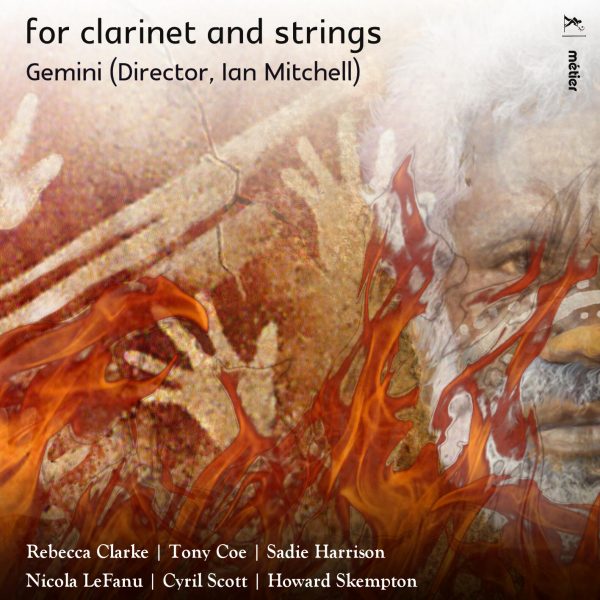Infodad
Chamber music, the contemporary sort and that of the fairly recent past, often manages to maintain a strong connection with earlier small-ensemble music while exploring some new areas. And many chamber works from the mid-20th-century time period to the present remain little known – giving performers and listeners alike the chance to explore some unfamiliar territory. Both as clarinet soloist and as leader of the Gemini chamber ensemble, Ian Mitchell does a fine job of introducing audiences to seven little-known chamber works, by six composers, on a new Métier CD.
The Clarinet Quintet by Cyril Scott (1879-1970) is a single-movement work of considerable intensity and rich post-Romantic sound. The four Songs without Words by Nicola LeFanu (born 1947) take the solo clarinet through a wide range of sounds and emotions, sometimes with accompaniment. There is only a modicum of the songful in these pieces, although there is quiet gloom in the last and longest piece, In Memoriam (Remembrance). Next on the CD is Lullaby by Howard Skempton (born 1947), and it is a warm and gently rocking piece, if not as relaxing as its title implies.
Dream Odyssey by Tony Coe (born 1934) consists of three short pieces (each less than two minutes long) that are gently evocative of differing dreamscapes (Marsh Lanterns, The Pathless Wood and Bird of Fortune). In contrast, Prelude, Allegro & Pastorale by Rebecca Clarke (1886-1979) is non-programmatic music, although it too produces feelings of disparate moods – first quiet and soulful, then bouncy and dissonant, and finally expansive and warm.
Fire in Song by Sadie Harrison (born 1965) returns to the realm of deliberate tone-painting in movements called The World’s Lament, Bandicoot and the Hollow Log, Quail and the Burning Twig, Honey Bees and the Paperbark Swamp, Honey Bees and the Tall Grass, Bäru the Saltwater Crocodile and the Ancient Fire, and Lament for the Whole World. Knowledge of the underlying folk tales would certainly help explain the movements’ meanings and the introduction of percussive sounds into them – but even without such knowledge, it is interesting to hear the ways in which Harrison varies the harmonies and rhythms of the pieces to portray a variety of small but telling scenes, most lasting less than two minutes. The longest, crocodile-and-fire piece includes spoken narrative but is no more illustrative as a result. The disc concludes with another seven-short-movements work, the second offering by Skempton: Gemini Dances. Here most pieces actually are danceable (or marchable in the case of the central Alla marcia), and the overall impression of gentle give-and-take among instruments shows considerable sensitivity to the underlying concept of chamber music. Nothing on the disc stands out as an exceptional discovery or rediscovery, but most of the pieces are pleasurable, and all are very well performed by soloist and ensemble alike.
@divineartrecordingsgroup
A First Inversion Company
Registered Office:
176-178 Pontefract Road, Cudworth, Barnsley S72 8BE
+44 1226 596703
Fort Worth, TX 76110
+1.682.233.4978












